[8/16/16 – See the updated and expanded version: How to grow Japanese black pine from seed]
After picking and prepping your pine cones, sunshine, when available, and dry air, work to open the cones. With good weather, which we’ve had in spades lately, this only takes a few days.
When you remove the open cones from their trays, you’ll notice that many seeds have already fallen out. Save these – many viable seeds are usually among those that are first released from their cones.

Open pine cones
Pine cones are attractive by design. Like asparagus and pineapple, pine cones are arranged by the Fibonacci sequence. Looking closer reveals the relationships between a cone’s constituent parts. The seeds are nestled into the base of each scale (scale bract) with the wing (seed bract) facing outward. As the scales open – an action promoted by dry air – these wings, not unlike maple seeds in design, can catch the wind and help the seeds travel when they detach from their cone.
Pine cone – Japanese black pine
Not all seeds detach so easily. I’ve learned that a few simple taps on the tip of the cone release most of the available seeds inside. Several more taps on the sides may further coax reluctant seeds away from their cone.
Not always satisfied by what comes out, I’ve dismantled more than a few cones to make sure I didn’t miss any good seeds inside. Alas, this has proved more work than the effort merits. While I’ve pulled a few good seeds out of cones in this fashion, I haven’t found enough to make this a regular practice. Most of the good seeds develop in the middle of the cone – where it is thickest – and these are the seeds that are most easily released. Picking cones apart usually yields little more than an abundance of sterile seeds.
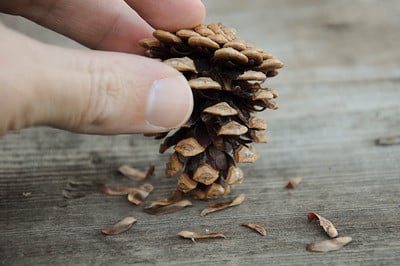
Tap the cones on end to release the winged seeds
How to tell good seeds from bad? Crack them open to see – light colored seeds are dry and hollow. Likewise very small or shriveled seeds.
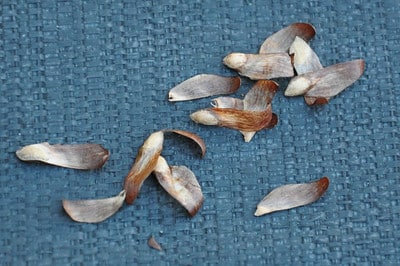
Sterile seeds – to be discarded
Viable seeds are darker with brown and black stipples. They’re also heavier, though this is tricky to discern in one’s hand. I usually crack enough open to recalibrate my understanding of which to keep and which to discard when I begin sorting seeds each year. After cracking a few good ones I catch on fast.
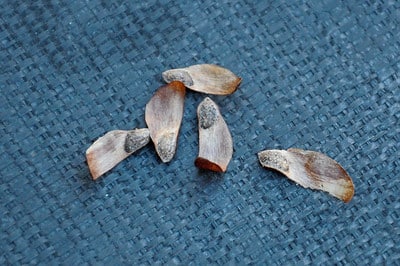
Viable seeds – keepers!
A more conservative approach entails saving all seeds you think have a chance until spring. Seeds should be stored in a cool dry space through winter. When planting time comes, all seeds are soaked in water overnight before they are planted. Good seeds sink – bogus seeds float. If you end up saving a lot of floaters, no harm done.
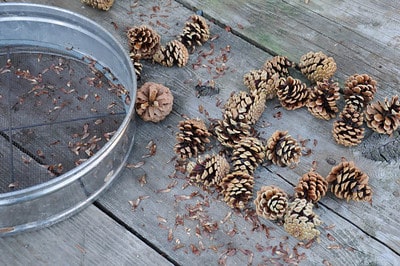
Pine cone detritus
Although collecting seeds is easy – the real work begins when they sprout – it’s only worth the effort when the seeds have good genes. Good technique can make passable bonsai from any viable seed, but it’s nigh impossible to make great trees from merely adequate seed.
Subscribe to Bonsai Tonight
New Posts Delivered Every Tuesday and Friday
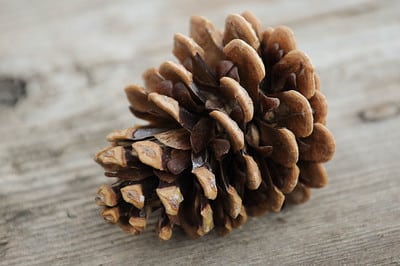
Janet Roth says
Jonas, your blog is really a pleasure to read.
And I hope that in about 30 years we’ll have lots of good young pines in this country as a result of this series 🙂